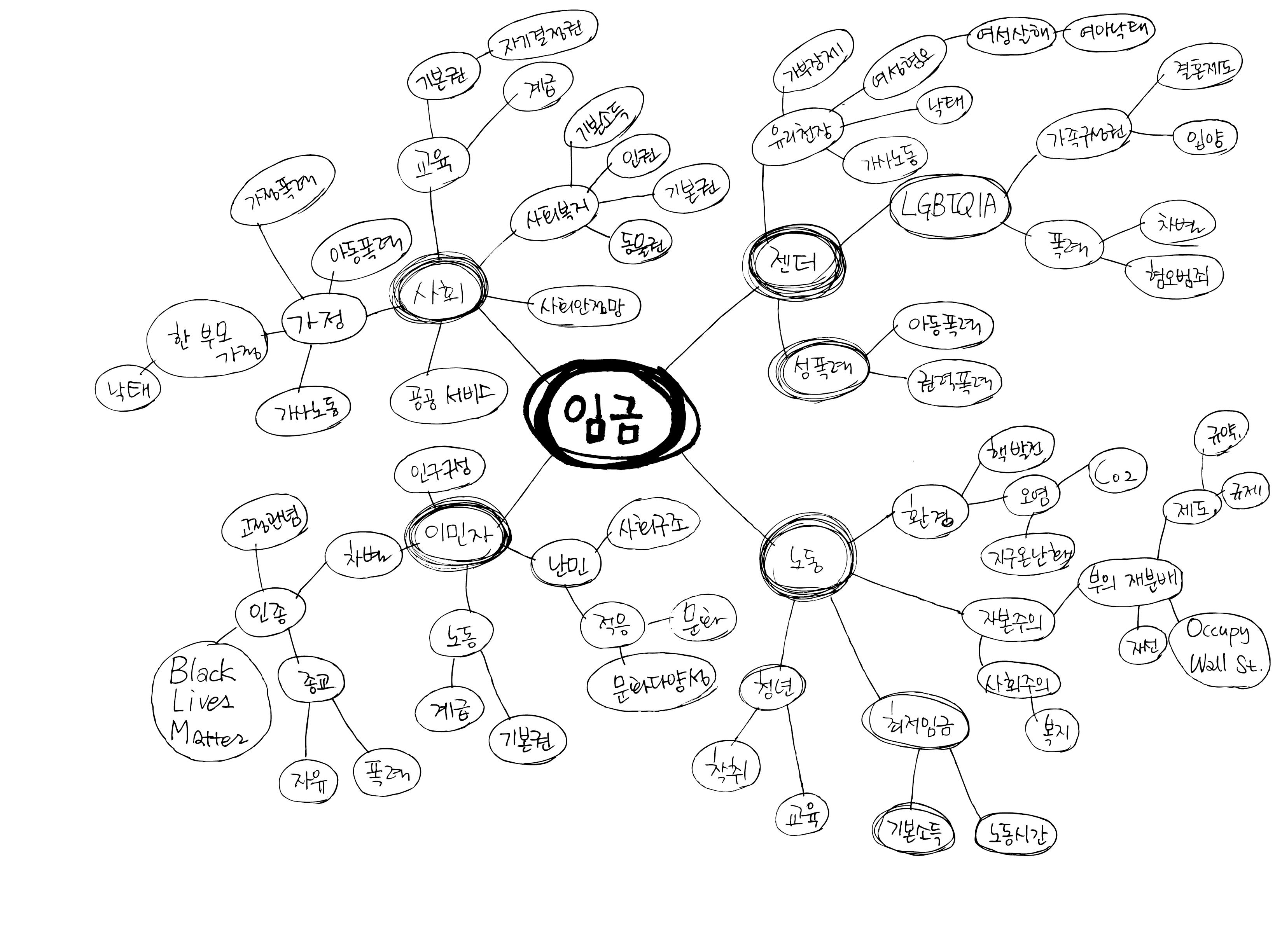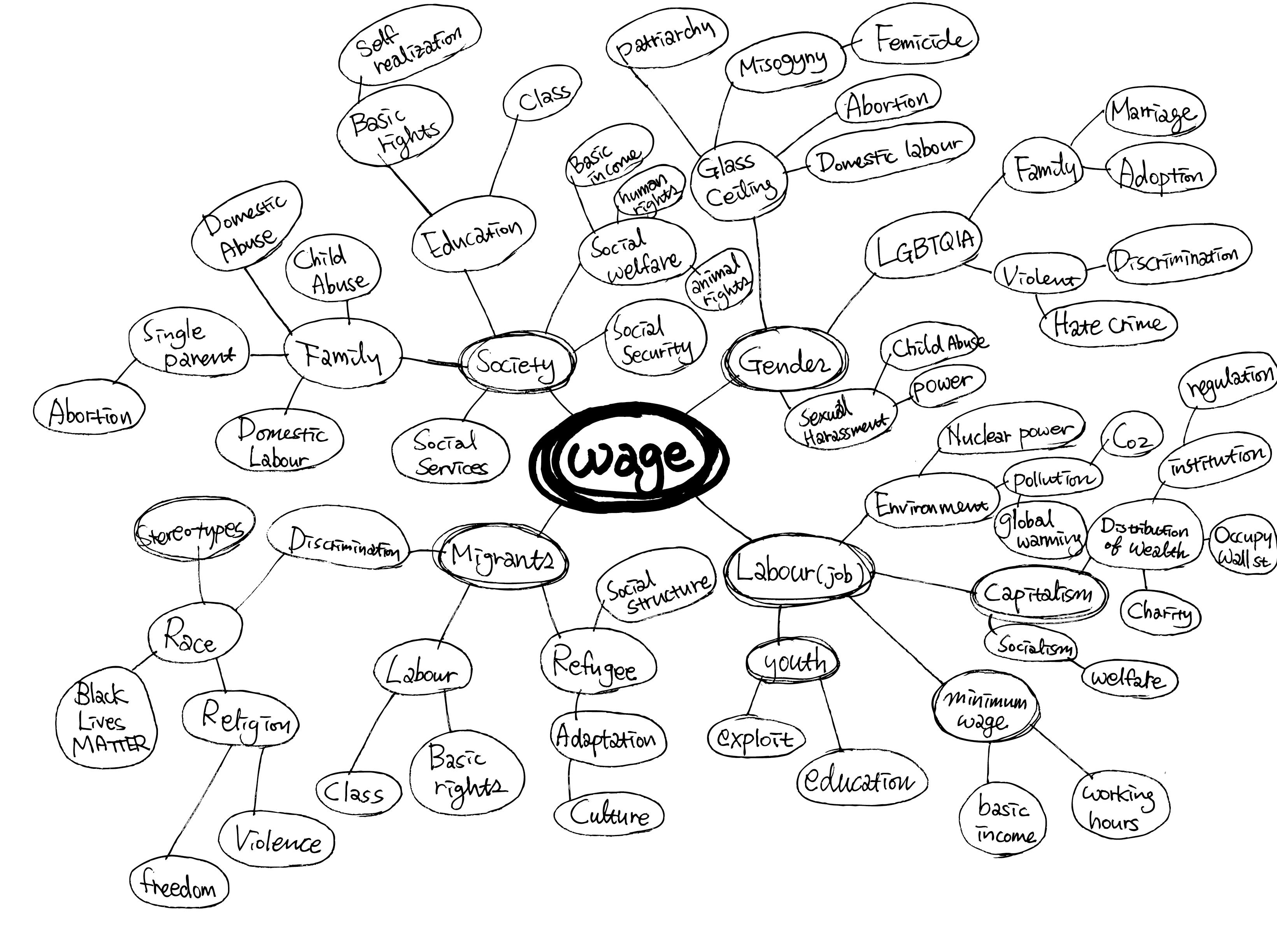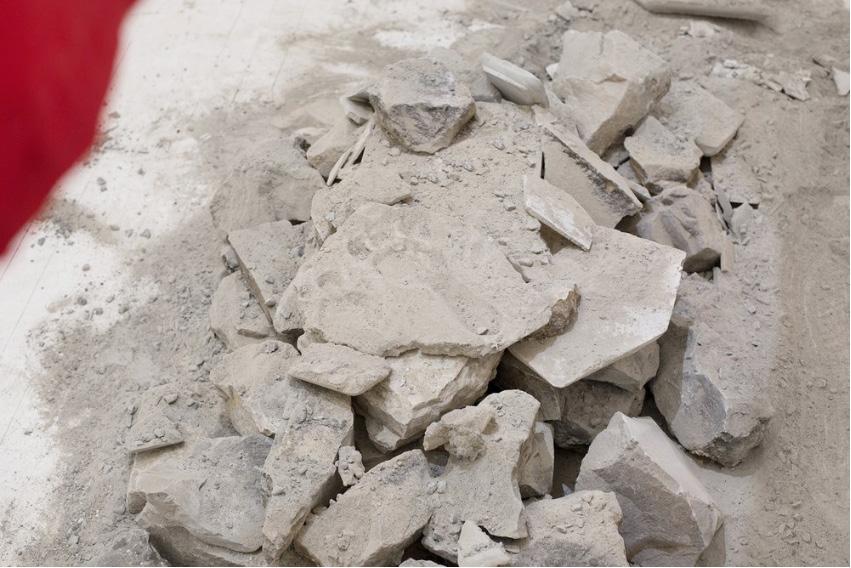
6 minute read
Kate Gilmore
Camille Lee, Mind Map part of The Game, Ink on Paper, 2016.
Camille Lee
Advertisement
By Jasa McKenzie
Camille Lee’s piece The Game was born out of her perspective as an immigrant from South Korea to the United States. The piece visualizes the relationships between social and political issues and how one can not be changed without affecting an other. This piece coincides with her Mind Map,
written first in Korean then translated into English, which aided in her concept mediation for the piece. The map is a way of working through and finding sense in something that feels chaotic. This form is also something that is done in larger organizational structures such as clarifying work flow. The word “Wage” is center in the mind map, inspired by the concept of domestic labor. She explores how to negotiate domestic labor. After her marriage to a U.S. citizen, she reconciles her split national identities, not feeling wholly integrated with either side. She has only been residing in the U.S. for a few years, only knowing the culture under the Obama Administration. She now must mediate what the different periods and atmospheres of America mean and how they affect her. Everyone creates mind maps of sorts, like in the tradition of memory palaces. People are used to more fluid networks and understand change as integral to the relations one envisions. The map, and especially, the publication of it, tries to establish certain fixed connections, and in this case, a way to exemplify the process of finding stability in one’s own life. The Game, in contrast, suggests that the relations are vulnerable and will, eventually, fall. The Game exhibits how negotiating important issues facing a society is not only about a single topic. A balance between issues, whose interconnectedness is not always obvious, must first be sought. The piece also suggests that the order of these concepts is fairly random and physical balance is more important than actual conceptual agreement. The piece alludes to an invisible hand, those in power playing the game of control and prioritization over issues that greatly affect different publics in major ways. As in a well known family game, the viewer imagines as if they were playing, delicately making the executive decision what topics take priority at the top, never wanting to be responsible for the collapse of the entire structure.

Anh Thuy Nguyen
By Amanda Lee
AL: To begin with, tell us about yourself as well as the journey of creating Of Place and Nation (2017).
ATN: My name is Anh Thuy Nguyen. I am a Vietnamese-born artist who is currently based in New York. My process of creating Of Place and Nation started with my many mental disassociations from both Hanoi (Viet Nam) and New York while traveling between the two places over the summer of 2016—meaning that I found myself often longing for one location while physically being in another. I was in Hanoi in June–July 2016 and constantly yearned for my life in New York. When I came back to New York in August 2016, I was hit with unexpected nostalgia for Hanoi. It was due to this overwhelmed feeling that questions of nationality, of place, and of belonging arose. Of Place and Nation was then born.
AL: The title of our show, The Map Is Not the Territory, speaks of the difference between an entity and its abstraction. An artist’s work is often seen as a representation of the artist and of what makes them (culture, gender, sexuality, race, age, etc.). This results in an immediate assumption, even before truly knowing the person as an artist, of an entity. Do you find this challenging, or do you embrace it into your works?
ATN: The assumption of identity (based on culture, gender, sexuality, race, age, etc.) has always been a challenge for me. I always try to maintain work within the lines: embracing my cultural identity without oversimplification, and being political without being didactic. Some of my pieces specifically address cultural and political identity, like Of Place and Nation, which speaks more directly to my “entity.” But with some other projects, I consciously steer away from the autobiographical direction and approach it with much more disguise. Overall, as an artist, I don’t think I can ever fully “embrace” or endorse public “immediate assumptions” of the artist, especially within my process. It might run the risk of exploitation or generalization. However, as a Vietnamese artist, I am proud of my heritage, and I let it naturally weave itself into my work.
AL: The United States of America is currently going through one of the most harrowing political storms of its history. What does that future hold for you as a female artist who is a non-US citizen living in America? Has it sti- mulated a constructive but possibly painful perspective towards your artworks?
ATN: As much as I try not to let the current political situation affect my work, I found myself subconsciously making more political art. The work I made in late 2016 and early 2017 transformed significantly in terms of physical shape, from abstract fragmentation to concrete representational political objects—such as the flag in Of Place and Nation—and now, protest signage. Since this just happened recently, I still haven’t had a chance to reflect on whether it is fully a constructive transformation, but there is a level of anxiety and despair in the making process that is impossible to ignore. I think artists are generally sensitive to political changes, so it is extremely hard for them to remove themselves from current issues, and I am no exception.
AL: Many of your artworks, like Of Place and Nation, have an intimate and sensual touch that represents the female body. More importantly, your body. Do you find that this is an important piece of information for the viewers to know when viewing your art pieces?
ATN: Overall, yes and no. It depends on the concept of the project. If the project is about femininity, sensuality, and intimacy, then I will try to make sure that this idea evidences itself in the object. Of Place and Nation is a particular case, since the work is somewhat an autobiography that is situated within a larger context, so I placed my footprints in the pieces of cement as a subtle reminder of its autobiographical aspect. I am currently in a collaboration about intimacy with another artist based in Viet Nam, in which I exchange impressions of my body every month through postal mail, so the objects act much more sensual, more corporeal. When I get this question about the female body and its sensuality in my work, I often answer that it is not the sensuality that is the primary focus of the work, but the material it is put against, and how it is placed within space. All in all, what interests me is the confrontation of the female body—its softness, its sensuality—with another object associated with power structures, politics, and masculinity, one that may cause uncertainty and discomfort .

Anh Thuy Nguyen, Of Place and Nation, Silicone, polyester fabric, thermoplastic, casted concrete, sand, and mixed media, 2017.






